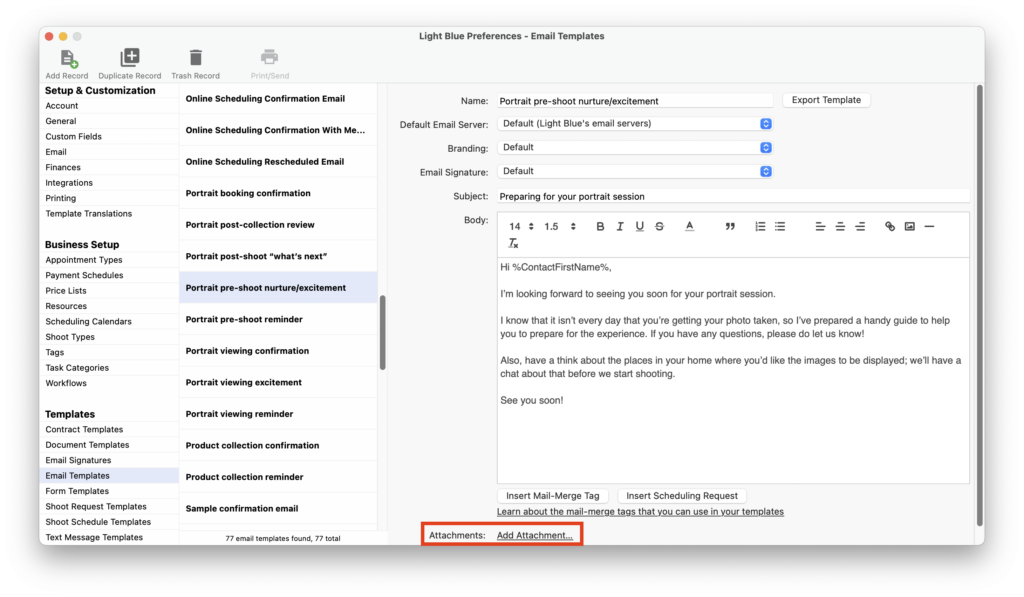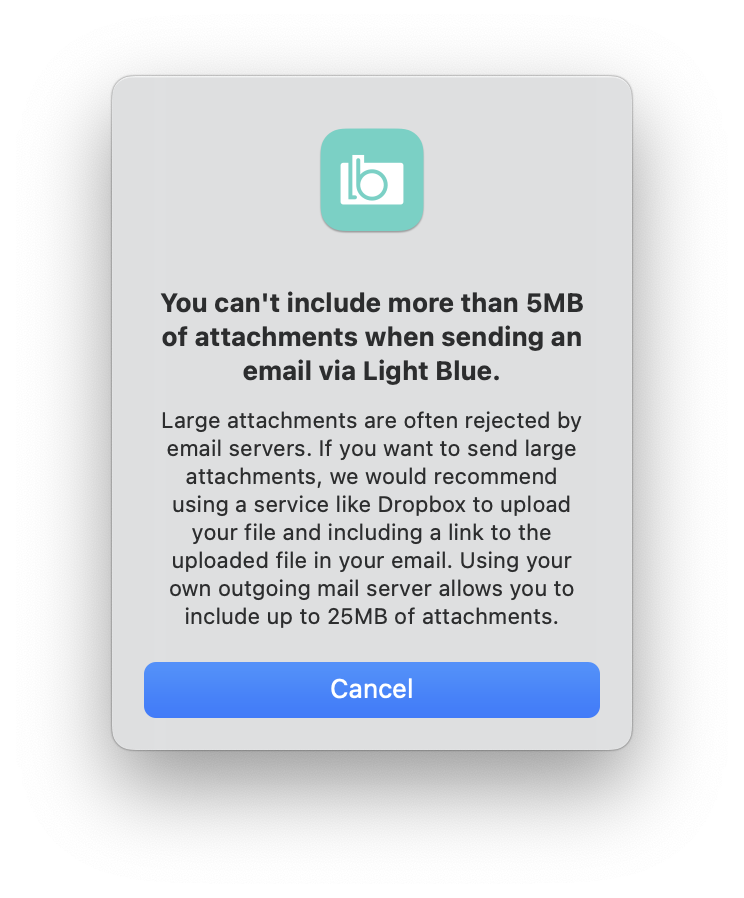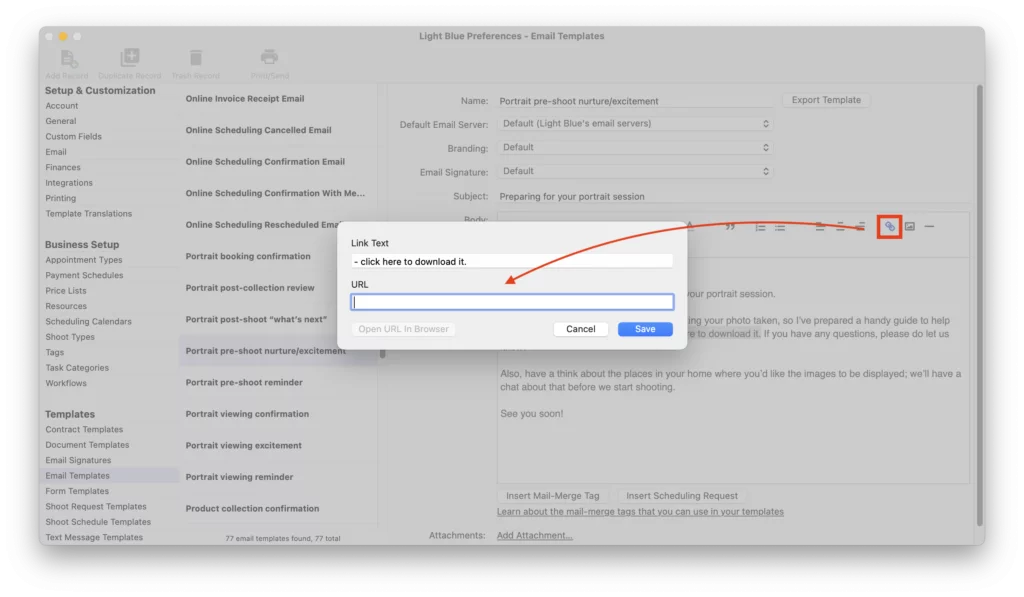Emails: how to send documents like PDFs, guides & brochures to clients
Quite often there can be a need to send your clients extra information that can’t be easily added to the body of an email; there’s simply too much detail to include!
For example, before you start to work together you may be sending them brochures and details of the packages you offer. In the lead-up to their session, there could be session guides or advice about what to wear. And afterwards, there could be specific instructions about viewing their gallery and how to order their products.
However, when using Light Blue it’s very easy to add these documents as attachments to your email.
Attaching a document
Documents can be attached to a standalone email or if it’s a document sent more regularly they can also be added to Email Templates; whichever you’re using the process is the same.
- Simply click on the “Add attachment …” link at the bottom of the email.
- Locate your document and attach it to the email.

- If you need to attach another, click on the “+” button.

- And if by mistake you’ve attached the wrong document, click on the document followed by the “-“ button!

Size limits for attachments
Large attachments are often rejected by email servers so Light Blue has set a total size limit for any attachments; if you’re using Light Blue’s servers the limit is 5MB and if you’re using your own, it’s 25MB.
If you’ve attached a file that’s too large to an Email Template the file name will appear in red.

And if you attempt to send an email with too large a file attached to it, a pop-up warning will appear and you won’t be able to send the email.

Sending large documents
If your document is larger than the maximum file size, you can host the document online, somewhere like Dropbox or Google Docs, and include a hyperlink to the file in your email.

Client portal emails
Attachments cannot be added to client portal emails; ie emails sent automatically as part of a Light Blue Form or Contract. However, you can still include a hyperlink to your file the same as you would for sending large documents as explained above.